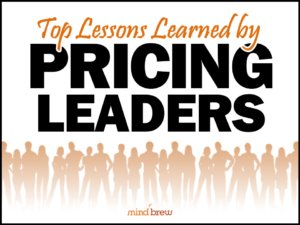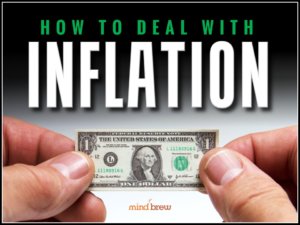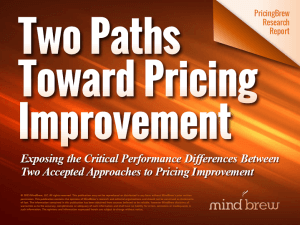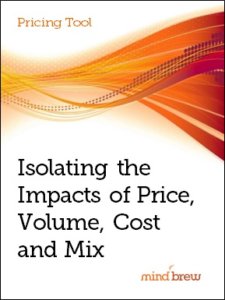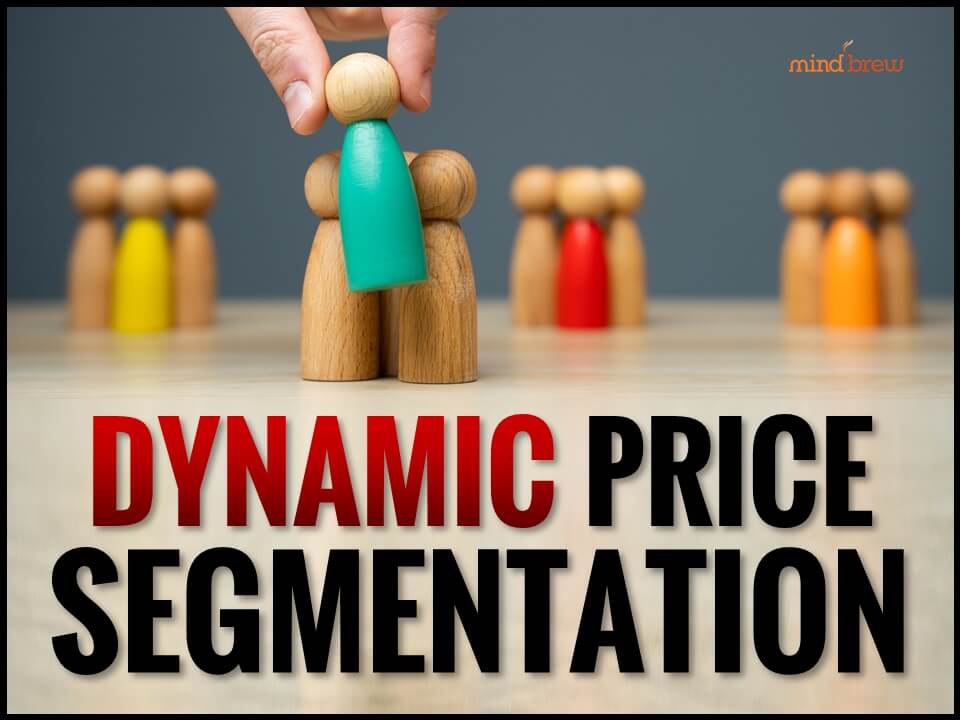As Pricing professionals, we’re wired to act, to adjust, and to overcome whatever challenges come our way. However, this proactive stance, while certainly commendable, can sometimes resemble the frenetic energy of swimming against an unstoppable tide. The reality is, the broader economic trends can heavily influence sales outcomes and pricing performance, and without this crucial consideration, we risk exhausting our resources fighting a battle that requires a very different strategy.
Here’s how easily it can happen…
When revenues and profits start to dip, the initial response is to dissect our processes and strategies, looking for what’s broken. We scrutinize product line and every deal to identify where we’ve gone astray. We identify some likely suspects and make some changes. But these changes have little effect…so we go further…and we make more changes…and then more.
This scramble, fueled by the urgency to “just do something,” often overlooks the fact that external economic conditions might be the true culprit behind the decline we’re experiencing. So instead of recognizing and realigning to the economic reality, we end up “fixing” a whole host of things that are not actually broken. And in the process, we can cause much more harm than good.
Swimming with the tide, rather than against it, begins with awareness. As we discuss in The Fundamentals of Pricing Intelligence, keeping an eye on larger economic trends and dynamics allows Pricing teams to adjust expectations, strategies, and tactics to better align with the realities of the market:
- GDP Growth Rates: Gross Domestic Product (GDP) is a broad measure of a nation’s overall economic activity. A declining GDP suggests that businesses and consumers are spending less, which can signal a forthcoming downturn in sales revenue.
- Consumer Confidence Index (CCI): The CCI measures how optimistic or pessimistic consumers are about their future financial prospects. This sentiment directly impacts their purchasing behavior, which in turn, can affect your downstream customers.
- Purchasing Managers’ Index (PMI): For B2B operations, the PMI can indicate economic trends in the manufacturing and service sectors. A declining PMI may hint at reduced business spending and a much more challenging sales environment.
- Unemployment Rates: Employment levels affect consumer purchasing power. High unemployment rates can signal a tightening of purse strings, impacting both B2C and B2B sales.
- Interest Rates and Inflation: The cost of borrowing and the value of currency can influence investment and spending. Rising interest rates or high inflation can lead to more conservative spending behaviors.
Now, recognizing and accepting the fact that broader economic trends can have a dramatic impact on performance doesn’t mean you should just throw up your hands and surrender to fate. Rather, it means you should leverage a more realistic appraisal of the situation; one that is mindful of the tide. Here’s what can be done:
- Adapt Sales Targets and Incentives: Align sales goals with realistic market potentials. This helps maintain motivation and acknowledges the extra effort required in a tough market condition.
- Focus on Customer Retention: In a down cycle or “low tide” period, acquiring new customers can be more challenging. As such, doubling down on customer service and retention becomes a strategic priority.
- Invest in Training and Development: Use slower periods as an opportunity to build the skills of your sales, marketing, and pricing teams, so they’re better equipped to sell in any economic environment.
- Diversify the Go-to-Market Approach: Rethink the GTM mix to include a broader range of channels, products, and/or services that may be more resilient to economic downturns.
- Optimize Pricing and Sales Operations: Streamline processes to become more efficient, reduce costs, and improve speed without compromising the quality of customer interactions.
When these actions are taken, it is essential to communicate the rationale behind them to the entire team. When teams understand that strategic adjustments are responses to external factors rather than internal failures, they’re more likely to embrace change and contribute positively to the effort.
In conclusion, as Pricing professionals we have a dual mandate to 1) drive performance no matter the conditions, and 2) to do so without losing sight of the economic realities. By monitoring the larger economic trends and using this knowledge to inform our strategies, we can navigate turbulent waters more effectively.
Yes, we must work hard to improve and succeed every single day. But in doing so, we have to “mind the tide,” so we’re not fighting the wrong battles and fixing things that aren’t broken.


